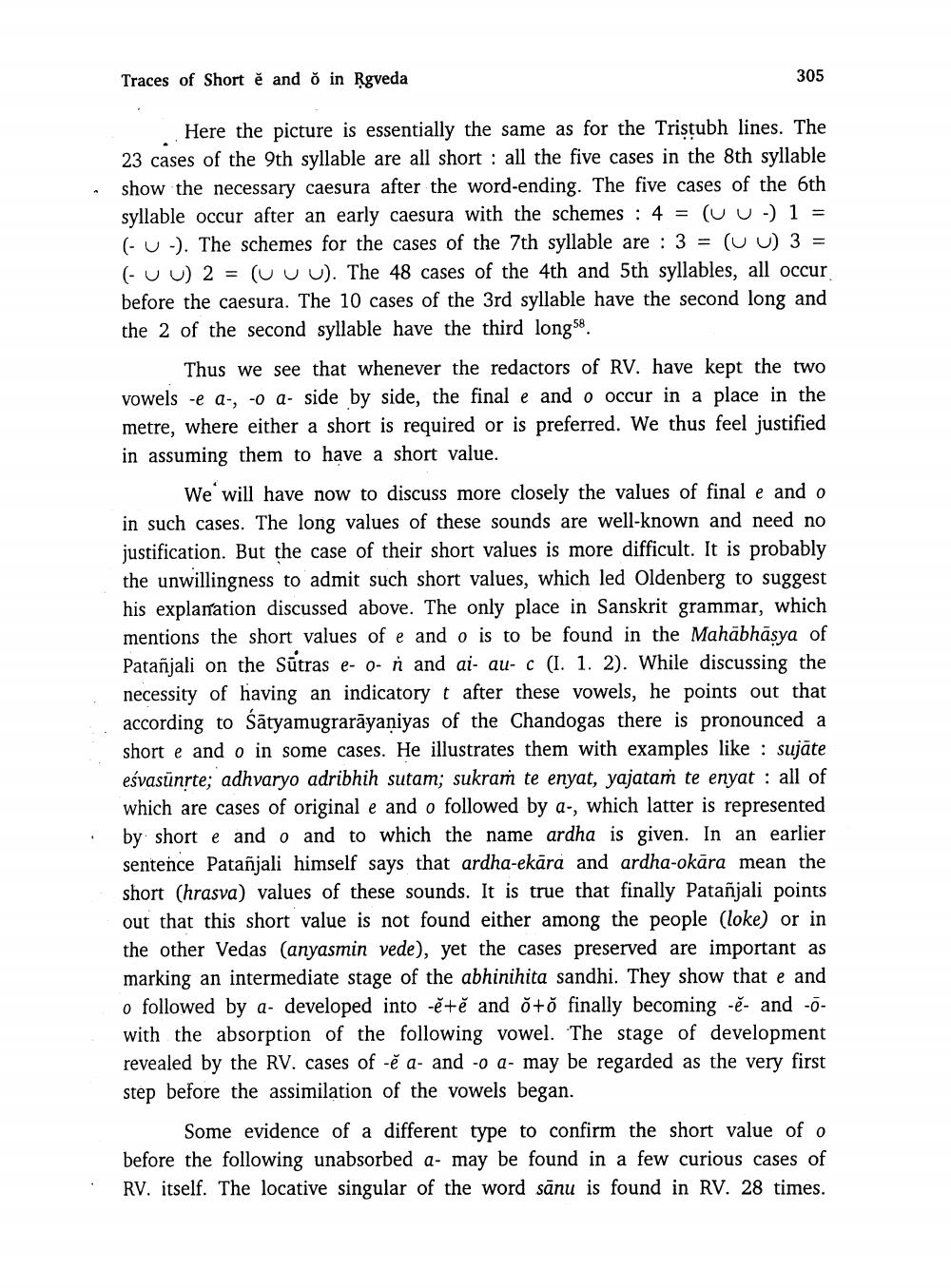________________
Traces of Short ě and o in Rgveda
305
Here the picture is essentially the same as for the Tristubh lines. The 23 cases of the 9th syllable are all short : all the five cases in the 8th syllable show the necessary caesura after the word-ending. The five cases of the 6th syllable occur after an early caesura with the schemes : 4 = (U U -) 1 = (- -). The schemes for the cases of the 7th syllable are : 3 = (UU) 3 = (UU) 2 = (
UUU). The 48 cases of the 4th and 5th syllables, all occur before the caesura. The 10 cases of the 3rd syllable have the second long and the 2 of the second syllable have the third long58.
Thus we see that whenever the redactors of RV. have kept the two vowels -e a-, -o a- side by side, the final e and o occur in a place in the metre, where either a short is required or is preferred. We thus feel justified in assuming them to have a short value.
We will have now to discuss more closely the values of final e and o in such cases. The long values of these sounds are well-known and need no justification. But the case of their short values is more difficult. It is probably the unwillingness to admit such short values, which led Oldenberg to suggest his explanation discussed above. The only place in Sanskrit grammar, which mentions the short values of e and o is to be found in the Mahābhāsya of Patañjali on the Sūtras e- o- n and ai- au- C (1. 1. 2). While discussing the necessity of having an indicatory t after these vowels, he points out that according to Satyamugrarāyaniyas of the Chandogas there is pronounced a short e and o in some cases. He illustrates them with examples like : sujāte eśvasünrte; adhvaryo adribhih sutam; sukras te enyat, yajataṁ te enyat : all of which are cases of original e and o followed by a., which latter is represented by short e and o and to which the name ardha is given. In an earlier sentence Patañjali himself says that ardha-ekāra and ardha-okāra mean the short (hrasva) values of these sounds. It is true that finally Patañjali points out that this short value is not found either among the people (loke) or in the other Vedas (anyasmin vede), yet the cases preserved are important as marking an intermediate stage of the abhinihita sandhi. They show that e and o followed by a- developed into -ě+ě and o+ő finally becoming -ě- and -- with the absorption of the following vowel. The stage of development revealed by the RV. cases of -ě a- and -o q- may be regarded as the very first step before the assimilation of the vowels began.
Some evidence of a different type to confirm the short value of o before the following unabsorbed a- may be found in a few curious cases of RV. itself. The locative singular of the word sānu is found in RV. 28 times.




